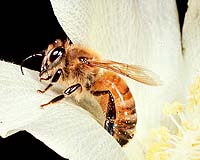 |
Stockholm, Sweden (SPX) May 12, 2009 The challenge of meeting future water needs under the impacts of climate change and rapidly growing human demands for water may be less bleak than widely portrayed a team of Swedish and German scientists says. If the overall water resources in river basins were acknowledged and managed better, future food crises could be significantly reduced, say researchers from Stockholm Resilience Centre at Stockholm University, Stockholm Environment Institute and Potsdam Institute for Climate Impact Research. The challenge of meeting future water needs under the impacts of climate change and rapidly growing human demands for water may be less bleak than widely portrayed. An analysis by a team of Swedish and German scientists quantifies for the first time the opportunities of effectively using both "green" and "blue" water to adapt to climate change and to feed the future world population. The study was recently published in the journal "Water Resources Research". The current approach to water management considers only blue water, that is river discharge and groundwater. According to the researchers, this limits the options to deal with increasing water scarcity and water risks induced by climate change. Under those conditions, over three billion of the current world population are estimated to suffer from severe water scarcity. The new analysis which additionally accounts for green water, that is water in the soil that stems directly from rainfall, suggests that the actual number is under one billion. It also shows that wise water management can lift billions out of water poverty. "This opens a new area of investments for climate adaptation and a window to achieve a much needed new green revolution in poor countries in the world. Our analysis shows that many water-short countries are able to produce enough food for their populations if green water is considered and managed well," the researchers report. Their article, entitled "Future water availability for global food production: The potential of green water for increasing resilience to global change", changes fundamentally the conventional bleak estimations for future water scarcity in the world. "Much of the past debate regarding various water-scarce regions focused on the absence of water rather than the opportunities linked to the presence of water," says lead author Johan Rockstrom from the Stockholm Environment Institute and the Stockholm Resilience Centre. "We have applied the latest global hydrological modeling and climate scenarios to analyse down to the local village scale, how much water farmers actually can access. Normally this leads to a very gloomy result as only blue water resources for irrigation are considered. We have included the rainfall that infiltrates in the soil, which forms the basis for all food production in rainfed agricultural systems. We also highlight an enormous untapped potential due to massive unproductive losses of blue and green water."
Unhidden resources leads to stronger resilience "We show that investments in current technologies and improved green water use can promote more robust, climate-resilient farming systems, which provide more stable food supplies," says Holger Hoff, researcher at the Potsdam-Institute for Climate Impact Research. Many countries which are classified as chronically blue water-short, have enough blue-plus-green water to produce a standard diet for their populations. Kenya, for example, has plenty of unused or not well-managed green water to benefit from. "Not even by 2050 and under climate change will the country become water-short if both blue and green water will be managed well," says Hoff.
Good options exist, but not without sacrifice Using the LPJmL dynamic global vegetation and water balance model, which simulates the establishment, growth, productivity and water consumption of natural and agricultural vegetation, present (1996-2005) and future (2045-2055) water availability around the globe were simulated. The model showed that by 2050, 59 percent of the world population will face blue water shortage, and 36 percent will face green-plus-blue water shortage. This means that 36 percent of the world population will live in countries that will not have enough water to produce their own food. "Unfortunately, despite the new opportunities arising from our green-blue analysis, our findings show that humanity will still face major water challenges by 2050 in certain regions of the world," says Rockstrom. Dr Karlberg calls for a broadened green-blue approach in order to identify options for better water resilience building. "However, provided the green water was managed better, for example by methods to increase plant transpiration at the expense of unproductive soil evaporation, even under climate change good options would exist to build water resilience in many countries even without expanding cropland." The research team will in forthcoming studies further examine the potential of specific green water management strategies to raise future food production. Share This Article With Planet Earth
Related Links Stockholm Resilience Centre Swedish Research Council Farming Today - Suppliers and Technology
 Domesticated bee numbers soar amid buzzing demand
Domesticated bee numbers soar amid buzzing demandWashington (AFP) May 7, 2009 The number of domesticated bees is on the rise worldwide despite declining numbers of wild honey bees in the United States and Europe, a study said Thursday. "The honey bee decline observed in the USA and in other European countries including Great Britain, which has been attributed in part to parasitic mites and more recently to colony collapse disorder, could be misguiding us to think that ... read more |
|
| The content herein, unless otherwise known to be public domain, are Copyright 1995-2009 - SpaceDaily. AFP and UPI Wire Stories are copyright Agence France-Presse and United Press International. ESA Portal Reports are copyright European Space Agency. All NASA sourced material is public domain. Additional copyrights may apply in whole or part to other bona fide parties. Advertising does not imply endorsement,agreement or approval of any opinions, statements or information provided by SpaceDaily on any Web page published or hosted by SpaceDaily. Privacy Statement |